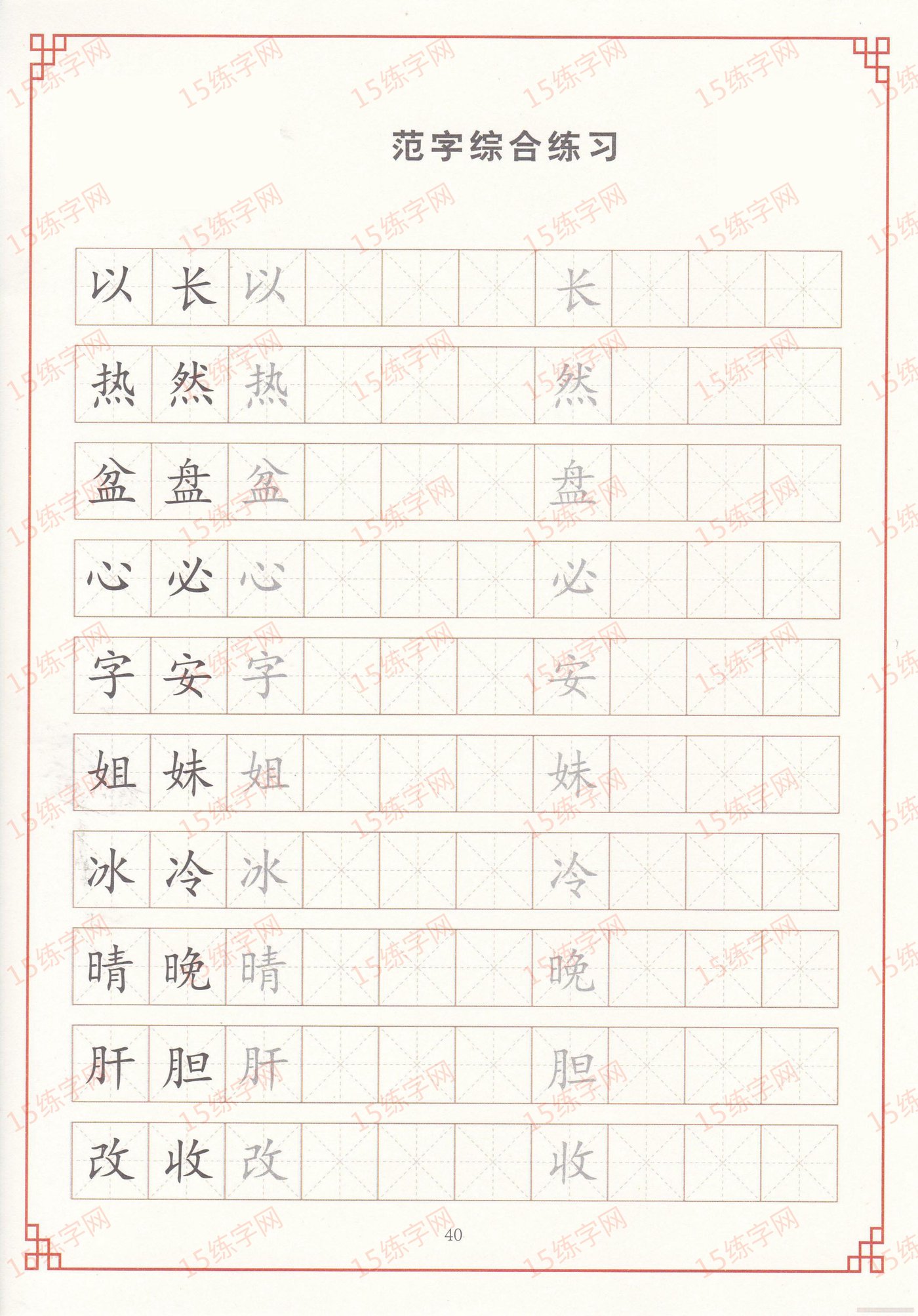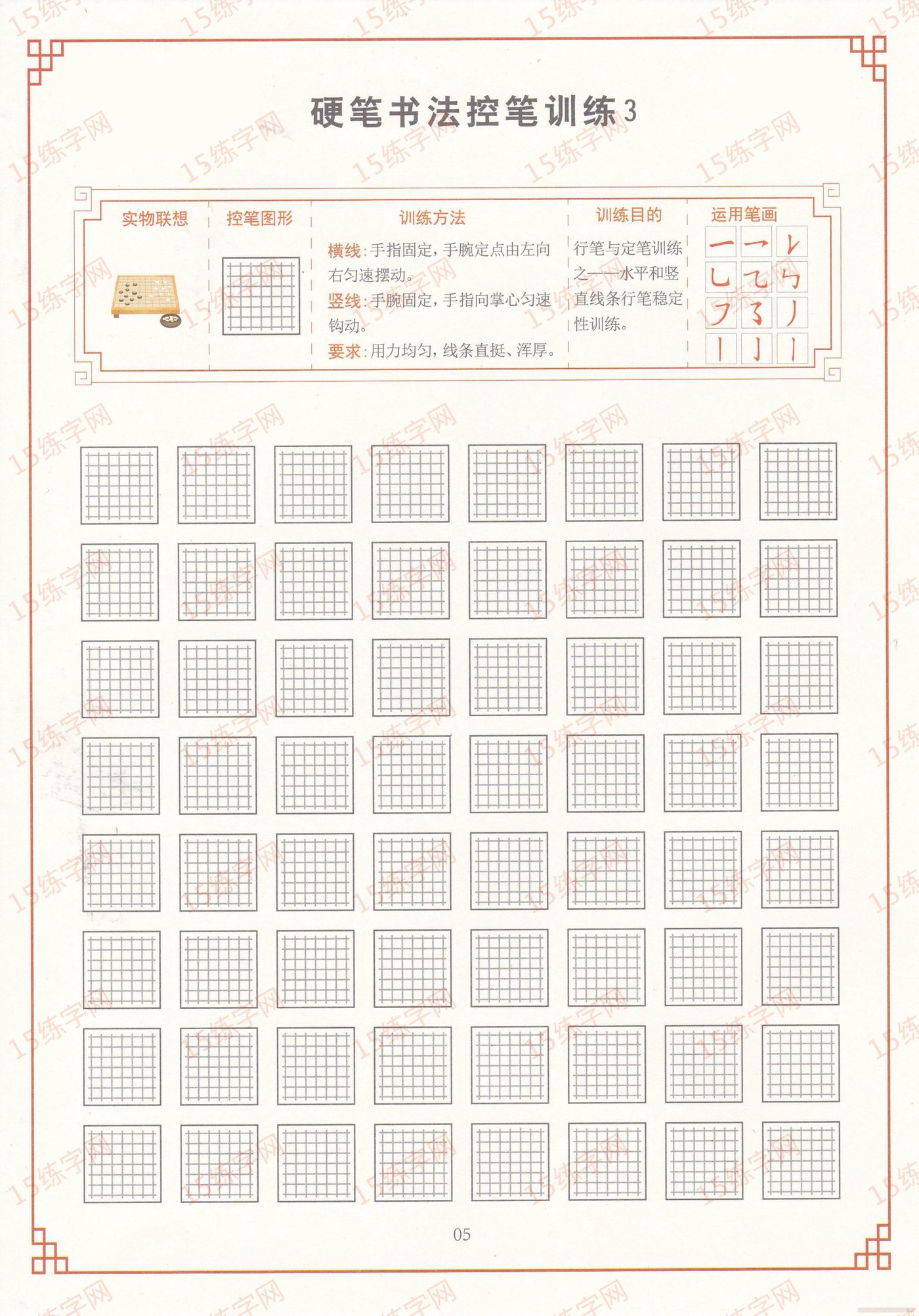Please think about these questions first: When building a house and laying a foundation, why not just build it? You need to practice your voice to sing, why not just sing? To practice fingering while playing the piano, why not just play? Learn to walk first and practice crawling, why not just run? When practicing martial arts, you should first practice physical fitness, why not just practice the moves?




So how should you practice pen control?
Pen control practice is divided into three stages. At present, many people only realize the first stage.
From the perspective of calligraphy practice, we divide pen control practice into three stages:
The first stage: Coordination and pen control training. No matter the details, just look for the feeling. This is to practice the coordination between the wrist, fingers and pen, and to correct wrong pen-holding postures such as hooking the wrist and clenching the fist. This is an article I wrote about pen control exercises on how to correct incorrect pen holding postures. You can read it if you need it.
The second stage: precision pen control training. Practice according to the line trajectory and changes in thickness, pay careful attention to the starting and ending positions, comprehensively improve the brain's ability to control hand movements, and truly achieve the integration of hand and pen. Fine pen control training is the most difficult for calligraphy training, because not only do you have to solve horizontal and vertical problems, but you also need to practice how to reflect changes in thickness, how to express roundness... so that every stroke becomes smart and full of life.
The third stage: aesthetic pen control training. Find the golden section point according to the Fibonacci spiral ratio, and arrange the strokes and radicals according to the golden section ratio to make the writing more beautiful. Here I want to expand on why we need to learn the golden ratio when practicing calligraphy.
So at what age do children start practicing pen control?
If your child is in kindergarten, middle class or primary school, please don’t miss this best opportunity to practice pen control. Wang Xizhi learned calligraphy from Mrs. Wei when he was six or seven years old. In ancient times, age was generally referred to as virtual age, so from this perspective, it is very appropriate for today's children to start practicing writing at the age of five or six. In our era, both mental and social factors are no worse than in ancient times. By the middle school stage, holding and handling pens have become a habit, and all kinds of homework are overwhelming. When practicing pen control, you must first correct bad habits. It is more difficult than practicing pen control in kindergarten and elementary school, and requires more time and energy. Of course, if you are willing to work hard, you will still get good results. Many parents are afraid that holding a pencil too early will cause hand development problems. This needs to be clarified: the correct pencil holding posture will not cause hand development problems, but will also enhance the child's head coordination ability. By practicing good pen control, your sitting posture will be more upright, your pen grip will be more accurate, your writing will be easier, you will know the weights of your pen movements, you will be able to sit still better, and you will be able to think more quickly. For the Chinese, holding a pen, like holding chopsticks, is a basic skill that people need to master throughout their lives, and they need to pay attention to the correct posture from the beginning.
Is it useful for adults to practice pen control?
There is no quick way to practice calligraphy. Don't take a shortcut. It requires a lot of time and a simple method is to practice the elements of pen control. Just practice with concentration and persistence. This is especially true for practicing standard characters. Although the current controversy about standard characters in the calligraphy circle still exists, practicing according to the GB2312-1980 standard regular script font library is currently the most authoritative, convenient, and most suitable way for learning and examinations. The ability to control pen runs through the entire process of learning and calligraphy creation. Pen control is inseparable from calligraphy practice. In fact, as soon as we pick up a pen and start writing, we have already begun to exercise our pen control skills. If you want to develop in the field of calligraphy, wait until you truly practice calligraphy by copying and consciously, and your awareness and consciousness of pen control will become clearer. Because from holding the pen to writing, from the implementation of techniques to the practice of writing, all techniques rely on the ability to control the pen. Without the ability to control the pen, all techniques cannot be realized. Some people think that pen control is very simple, just a few symbols, so now please take out your pen and draw a horizontal line on the paper and see if you can draw it straight. This seemingly simple action will change your perspective.
A tall building rises from the ground. It is very important to practice pen control before formally practicing calligraphy. Pen control practice is equivalent to the foundation. First lay a solid foundation and then slowly write. I once bought copybooks to practice calligraphy, but I wrote several copies. I still felt bad. Later when I learned calligraphy, the teacher asked me to control my pen. After I slowly mastered the skills and then practiced copywriting, the effect came out. Whether it's drawing or practicing calligraphy, I think the principle is the same, first easy and then difficult, first slow and then fast. Draw slowly when you are not very proficient yet, and increase the speed after you become proficient.








